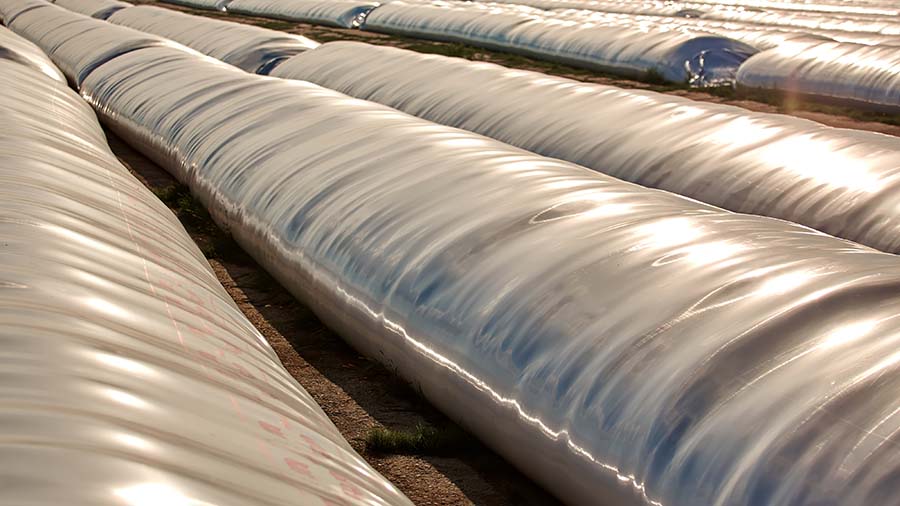Tailoring Protection to Your Silo Type
Picking the right silage cover is like finding the perfect pair of jeans—it needs to fit just right! Silos come in all shapes and sizes, from towering verticals to sprawling bunkers and even those flexible bag silos, and each one needs a cover that’s tailored to its unique style and dimensions.
Why does it matter so much? Well, a cover that’s a perfect match for one type of silo might be entirely unsuitable for another. The right cover can make all the difference in keeping your silage in top-notch condition, protecting its quality, and maintaining its freshness.
This article will explore several silos styles and help you find the perfect cover match. It’ll look at the specific needs of different silo types, from bunkers and trenches to bags and stacks, and offer expert tips on choosing covers that provide the best protection and performance. Get ready to become a silage cover connoisseur!
Silage Cover Essentials: What to Look For
No matter what type of silo you have, there are some must-haves when it comes to choosing a cover:
Built to Last
Your cover needs to be tough enough to handle whatever Mother Nature throws its way. Look for covers made from durable materials that can resist tears, punctures, and the occasional farm mishap (we’ve all been there!).
Weatherproof
Rain or shine, your silage cover needs to be ready for anything. Choose a cover that can withstand rain, snow, and wind and has built-in UV protection, like a super-strong sunscreen for your silage.
Size Matters
Don’t get caught with a cover that’s too small or too big. Make sure your cover fits your silo just right, providing complete coverage and minimizing any gaps where air or water can sneak in.
Secure Sealing
The cover should be constructed to create a tight seal around the entire silage pile. Look for covers with heat-sealed seams, reinforced edges, and well-placed gussets and folds that allow the cover to hug the contours of your silage pile for a snug fit.
Bunker Silos
Built with sturdy concrete walls, above-ground bunker silos are a popular and flexible choice for storing huge quantities of feed. However, their long, low profile and wide open tops leave them particularly vulnerable to the elements (think of a soft-top convertible in a hailstorm).
So what kind of cover can shield your silage from these challenges? Here are the details:
Tough as Nails
Bunker silos see a lot of action, with heavy machinery traveling over them during filling and feedout. Your cover needs to be exceptionally durable to withstand punctures, tears, and the occasional accidental bump. Reinforced geomembranes offer reliable strength and resilience, making them a top choice.
Flexibility
Bunker silos aren’t always perfectly smooth. They may have uneven surfaces and sloping sides, so the cover should be flexible enough to adapt to these contours. A snug fit is essential for a good seal, preventing air and water from sneaking in.
Weather Resistance
Bunker silos are exposed to the elements day in and day out, so the cover must be able to withstand the vagaries of the weather. Look for covers that can handle rain, snow, wind, and relentless UV rays. Some silo covers even come with built-in drainage channels to whisk water off the pile.
Trench Silos
Dug directly into the earth, trench silos are a cost-effective and space-saving solution. However, these silos rely on earthen walls for support, which presents some distinct challenges. For example, earthen walls can be uneven, susceptible to erosion, and may hide sharp objects or contaminants that could damage the cover or the silage.
So, how do you choose a cover (and liner) that can handle the unique demands of a trench silo? Let’s dig in:
Impermeability
Before loading the forage, the trench needs a reliable liner to prevent silage effluent from seeping into the surrounding soil and groundwater. It also keeps contaminants from mingling with and damaging your valuable feed.
Durability
Compacting silage in a trench silo is a heavy-duty job, often involving tractors and loaders. Your liner needs to be tough enough to withstand this pressure, resist punctures from any hidden rocks or debris, and handle the weight of the forage itself. Reinforced geomembranes or heavy-duty polyethylene covers are your best bet here.
Drainage
Since they’re right there in the ground, trench silos tend to collect rainwater and runoff that doesn’t naturally flow away from the trench. Excess water can overload the liner, ruin your feed, and weaken the trench walls. For best results, the cover should be designed to work in tandem with a complete drainage system that quickly channels effluent away from the silo before it gets a chance to pool.
Bag Silos
Bag silos, or silage bags, offer a flexible and cost-effective storage option for smaller operations or those whose silage needs vary from year to year. These large, airtight bags are easy to use and can be placed almost anywhere. While their portability and ease of use are appealing, bag silos are fully exposed to the elements, and choosing the right cover is essential.
Here’s what to look for in an effective bag silo:
UV Resistance
Bag silos sit out in the open, facing the full force of the sun’s rays. Over time, this exposure can degrade the cover material, leading to weakening, cracking, and potential leaks. Choose a cover with excellent UV resistance to prevent damage and ensure it lasts.
Puncture Resistance
Sharp objects like sticks, stones, or even curious critters can damage your silage bags, especially when stored out in a field. A reinforced, puncture-resistant cover will provide that extra layer of protection.
Weather Resistance
Bag silos must withstand a wide range of weather conditions, including rain, snow, wind, and extreme temperature fluctuations..
Secure Fit
A loose cover can flap in the wind, creating air pockets and potentially damaging the bag. Choose a cover that fits snugly, possibly with features like elastic edges or drawstrings for added security.
Breathability
While preventing oxygen and water from entering is crucial, your cover must also allow some breathability to avoid condensation buildup inside the bag, which can affect silage quality.
Stack Silos
First, let’s clear up any confusion: When we talk about “stack silos,” we’re not just talking about a pile of hay bales. True stack silos involve a bit more finesse. They’re a great option for temporary storage or situations where building a permanent structure isn’t feasible.
Think of it as creating a silage casserole in the open field. You start with a protective barrier on the ground—your sturdy “casserole dish.” Then, you add the silage, layer by layer, like the delicious filling. Finally, you seal the whole thing with a heavy-duty cover, your protective “lid,” to create the perfect environment for fermentation and storage.
Here are the main ingredients for a successful stack silo cover:
Wind Resistance
Without a robust external structure, stack silos can be like a wind sock in a tornado—highly susceptible to wind damage. Your cover needs to be able to withstand powerful gusts and prevent uplift, which can expose your silage to the elements. Opt for heavier covers, secure anchoring, and proper weighting to keep things in place.
Water Resistance
Keeping your feed dry is critical. Choose a cover that can quickly shed rain, preventing moisture from seeping in and causing spoilage.
UV Resistance
Stack silos are entirely exposed to sunlight, making UV resistance a critical factor for cover longevity. Choose a cover with high UV stability to prevent degradation and ensure it lasts season after season.
Size and Shape
Stack silos come in all shapes and sizes. Make sure your cover is large enough to comfortably blanket the entire pile with extra material for sufficient anchoring and weighting. If you plan on reusing the cover, consider going a size up or getting multiple covers that can be overlapped.
Conclusion: Choosing the Right Cover
Choosing the right silage cover is a crucial decision for any farmer, and it’s not a one-size-fits-all situation. Each silo type, from bunkers to trenches, bags to stacks, presents unique needs and challenges. With a clear understanding of these nuances and prioritizing factors like durability, weather resistance, proper sizing, and secure sealing, selecting a cover that provides optimal protection and performance is possible.
Take the time to assess your operational needs and choose a cover that’s up to the task. Your silage—and your bottom line—will thank you.




